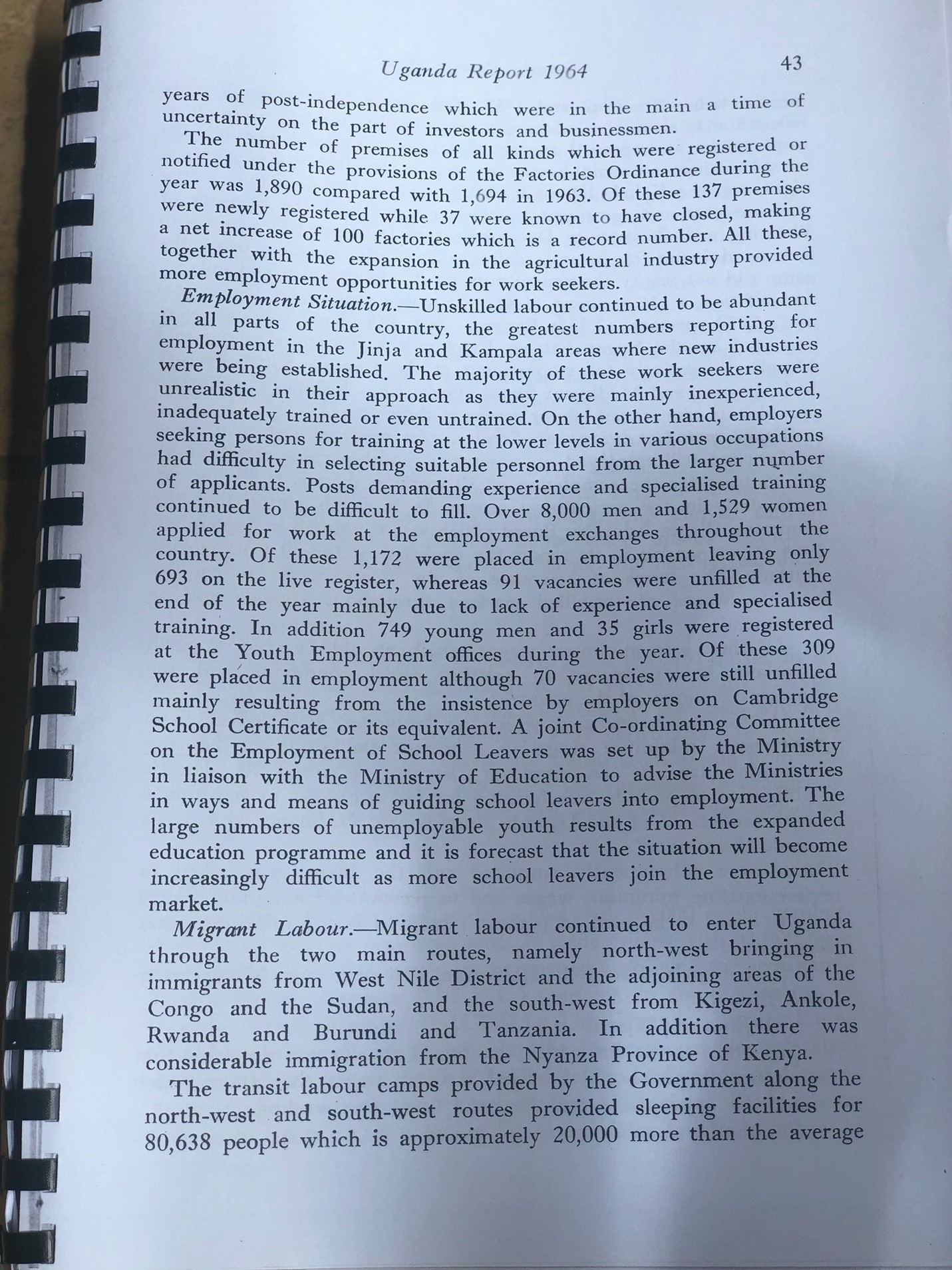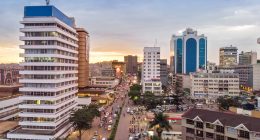Editor’s note: this article is part of the “Covid-19 Reset” project, where the LéO Africa Institute is asking its fellows and associates to imagine a new, progressive post-covid world for our respective communities and countries.
***
PART ONE
The great reset that is needed today as a result of the COVID global phenomenon is not a great leap forward with technology, as many may argue. What is true however is that technology is helping pull together, like a spider’s web, the various parts of the global value chain that defined the pre-COVID economy and has a significant coordinating role in the fight against the disease and the distribution of scarce resources. This aspect of technology, especially communications technology and some aspects of machine-based learning will be useful also in helping businesses and communities adopt their reach to present times and maximize value on the limited scale available to them.
But perpetual crisis is not the new normal. Most businesses around the world will be looking at their COVID related adaptations as the long road back to profitability and hopefully to reconnect with customers at the scale that was possible with expansive globalization. What is the new in this normal, however, is the “COVID mindset”. This can be defined as the shifting priorities for consumers and businesses that have been learned from the coronavirus and draw from the policies applied to contain it.
In particular COVID has made it clear where waste and inefficiency lie and may alter the way the global economy works once such waste and inefficiency is culled. For example, while international travel was essential to global tourism with countries looking to visitors from abroad, this curiosity may be driven to local sites and destinations that are easier (more efficient and practical) and safer (more likely to follow new protocols), as well as drive up the price and availability of long distance destinations making them more exclusive. Mass tourism may not recover because it may never be efficiently managed.
However other products such as shareable and interactive productions of virtual safaris may become popular. Facebook, for example, has signed on May 13, an agreement with VirVii, a virtual reality production company to maximize user experiences on their platform. This is the efficiency premium that has been derived from COVID and is likewise being integrated into the new normal where safaris and exotic far off destinations must find their customers in their living room and not require days of travel.
For economies like Uganda therefore the great leap into the post-COVID world is in fact a giant leap backward to resolve efficiency problems that have hobbled sustainable growth and quality of life for decades. They may not require the cutting-edge computer based technological efficiency aggregators or the creative energy behind some of these new ventures even though they could benefit from them.
Post-COVID Uganda is a project to bring to the 22nd century the potential of the country—with some appropriate modern tools. It may not look like the dystopian future of workers plugged into computers feeding into a hive remotely but the work of enhancing efficiency is central to the Ugandan experience and will be critical for jobs and growth. The efficiencies in Uganda are structural first and part of what is called “boring” development. They include more physical connectivity of roads, water and electricity, more efficient use of land, especially small holder farms and gardens for food production, more coordinated and communally managed health care. One could say much of this infrastructure has long been in development, however, with the COVID event—the learned lesson of greater self-reliance means that all these assets will require more efficient management. To this can be added the modern tools of coordination and the communications-backed movements of efficiency.
Before one asks questions about where future jobs will come from, we must ask how efficiently we were executing the jobs that needed to have been done yesterday. In pre-COVID Uganda the link between the large, young working age population and the jobs they needed was probably because inefficiency was a national industry.
How else can one explain that the sheer amount of problems that need solving, such as the construction and maintenance of roads, waterways, reservoirs, electrical and gas connections, planned settlement, etc., that are needed to enhance quality of life and expand choices remained undone whilst labour, eager, capable and willing remained suspended in inaction? What is it about the pre-COVID policies and outlook that prevented the government, organized investment and entrepreneurs from bridging that gap and unlocking the potential of Uganda through its labor and human capital?
As we have said before these aspects of development have remained a quandary. Efficiency could, one may argue, be delayed or postponed, because the political economy was serviced by borrowing from abroad, a small export economy and a city-state consumer base around Kampala, Entebbe, Mukono and other small towns. With COVID there must be a reset of this as external support is less and the export economy as well as the import-based consumer base in urban and peri-Urban areas dries out. It may well be that this COVID impetus to center efficiency in the management of public affairs and conduct of private business is lost as society finds ways to shake off the pandemic’s lessons. However, those businesses and departments that want to thrive in the post-COVID realities must find and apply an efficiency meter to their operations, their understanding of customer’s needs, and their access to other markets (similarly looking to become internally more dependent).
The COVID job market
The high watermark for Lake Victoria in the month of May has risen to the levels last recorded in 1964, nearly five-and-a-half decades earlier. In that famous year, while the government of Uganda and her officials were brimming with optimism and confidence—the Annual Government of Uganda Report recorded the unemployment situation in very familiar terms.

The challenge of jobs remained the tailoring of jobs for the market focused on the skills mismatch. This situation is worse today, amplified by time and inertia.
Formal employment is extremely low and figures either depressed or unavailable. A snapshot relying on statistics from UBOS shows that productive activity is present, but employment is low. A big chunk of labor (33%) is self-employed around mostly agriculture and agri-business and the government reports an actual unemployment rate of just 5%. However, when looked at in terms of the attempt to create a loop between labor, industry, local demand and quality of life, the picture is bleak. Moreover, current plans were tailored for the pre-COVID global economy and since the lockdown measures begun in March the proposed response to COVID is uninspiring.
Formal labor illustrates the crisis best. Today 70,000 labor market entrants chase just 12,000 jobs according to one statistic. If it were a football match or concert death and mayhem would follow if 70,000 people attempted to occupy a stadium with just 12,000 seats. It gets worse.
According to government statistics nearly 79% of the working population are in vulnerable employment. Only 11% of the remaining 21% waged labor earns more than UGX 133,000. Most wage labor is in “paid unemployment”. In focus then and now is the question where industry determines its job demands before it is “determined” that available labor has the wrong skills. Is labor a planned response to industry needs? In keeping with the efficiency meter then, is industry itself part of a planned stock of assets to supply quality goods and services intended to improve quality of life?
Just like in 1964, the government has turned to an import-substitution strategy to harness opportunities for production. This strategy has great promise if prosecuted efficiently. New industries marked to produce previously imported goods create new opportunities for labor, they could potentially demand local raw materials, impart new skills and increase resilience. However, to close the loop between labor, production and the local market additional lessons from the COVID-19 pandemic can be applied besides efficiency.
Here are a few.
Firstly, if we have learned anything since the last 50 years, it is that there can be no viable integration into global markets (globalization) without indigenization. Local value chains meant to improve the quality of life at home, supported by local skilled labor, producing quality goods and services, determine how well you take advantage of external markets. Conversely, they also determine your resilience when those markets and supply/demand chains are unavailable.
Secondly, in any situation where technology is required or where it is dominant as a factor, those who produce such technology or are majority innovators are also dominant forces. So, in the post-COVID world profit, for example, from the so-called surveillance economy of data products still flows out of Uganda and not in.
Thirdly, local planners, administrators and businesses need to step out of the fog of collective change. The infodemic (the rise of too much information about COVID and how the world is coping) must be seen from the perspective of our relationship to the global value chains, guided by our values, interests and functionality of our response. This is because there is no collective global experience. The reality is that globalization is selective, depends on power and the state of one’s development. For this reason it must also be elective—and give us, as Africans, a say in how we choose to relate to it.
Fourthly, local must be the new global in the post-COVID reset. Uganda needs to apply global standards to local products for local customers. This is sustainable development and resilient planning.
Fifthly, connecting with the environment, including social presence of mind about water resources, land use, forest regulation, quality of air, etc., is not an elite privilege. When great levelers like COVID emerge, they don’t choose who to target. Those who protect the environment and those who don’t all die.
Six, cottage industries, to which we will return in the second part of this article, are back. Mass production based on the model of cheap labor abroad or internally (for mass consumer markets) is a pre-COVID disaster that needs to remain in the past.
Seven, governments, private enterprise must learn from the essentialism of COVID. The jobs that were viewed as “low” skill, such as market vendors, cleaners and janitors, proved to be the quality jobs. We can choose quality of life, overabundance of choice, in our approach to building better societies and economies.
Finally, quality is essential but essential is the new luxury.
Angelo Izama is a Ugandan writer, journalist and analyst. He is the team leader at Kwa Wote, and the Head of Faculty at the LéO Africa Institute.









